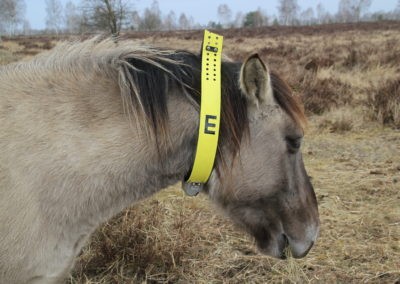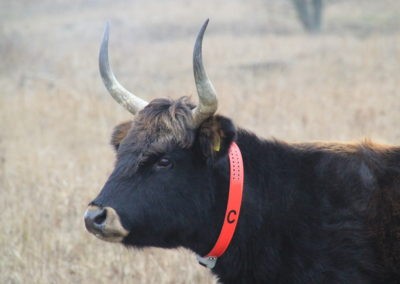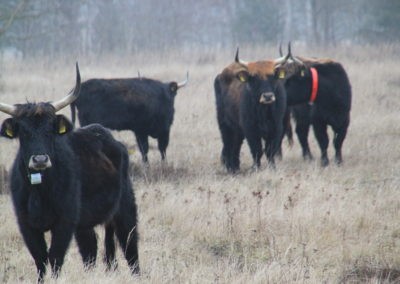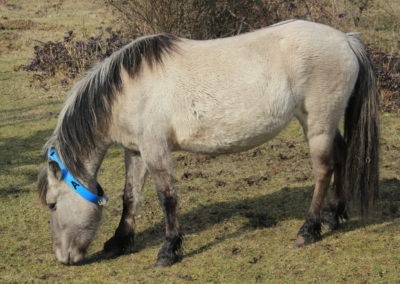© Terry Andersen – Revelstoke Caribou Rearing in the Wild
UHF-ID Tags
All Wildlife Products
For studying intra- and interspecies interactions, we offer small, energy-efficient, and economical UHF-ID tags. An UHF-ID Tag can be deployed itself and in addition can be integrated to any kind of collar. It can be equipped with a mortality sensor and a VHF beacon transmitter. Additionally, ID Tags are deployable as UHF Street ID Tags at stationary positions such as streets and pastures. Depending on the application, different data is transmitted between the ID tag and the collar. The ID tag’s signal is received and recorded using the UHF data communication of a VERTEX Plus collar. The maximum range is about 130 meters, but the ID’s signal output can be adjusted to the needs of your study.
UHF-ID Tags combine the following features:
- Housing: flexible
picture shows one possible design for a UHF-ID Tag - Weight: >120 g
- Lifetime: 18 – 36 months
depending on the battery size and configuration - VHF beacon:
- VHF frequency: 130 – 400 MHz (factory setting)
- Output Power: +10 dBm
- Pulse Length: 12 ms
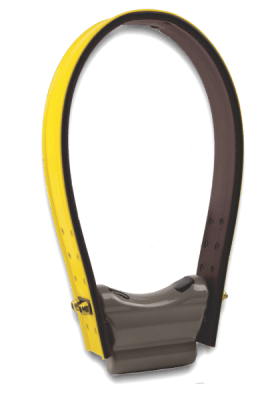
One possible design for a UHF-ID Tag. Housing with battery and electronic and belting is customizable.
Separation Sensor Application:
The Separation Sensor Application has been developed to study mother-offspring behavior, but it can also be a useful tool for monitoring inter-group dynamics. With the Separation Sensor Application, the VERTEX Plus collar is able to monitor signals from up to eight UHF-ID tags. The VERTEX Plus collar listens to the UHF-ID tags in pre-defined intervals. If an ID tag signal has not been received for one hour, the VERTEX Plus collar stores a separation event and optionally sends a message via GSM or Iridium. The tag’s signal does not only contain the ID, but also the information if the tagged animal is dead or alive. This information (mortality event) is automatically sent to the collar, independent of the communication schedule.
More Information...
The UHF-ID Tag: Separation Sensor Application…
- observes the activity and detects the death of the ID-tagged animal.
- sends its ID with status (death or alive) to the GPS collar.
- VHF Beacon switches to mortality signal in case of death of the animal.
The GPS collar…
- stores the present/absent status for each measurement point.
- sends a present/absent list with each GPS transmission (GSM & IRIDIUM) including the status (dead or alive).
- sends an emergency signal with mortality message (optional).
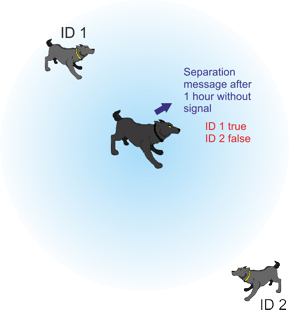
Check out our Flyer:
Proximity Sensor Application:
Another UHF ID-Tag / VERTEX Plus Collar application is the Proximity Sensor application. The Proximity Sensor is part of each VERTEX Plus collar with UHF communication. It receives signals from UHF ID tags (e.g. on prey animals) and then
- stores the UHF ID with time stamp and signal strength,
- transmits the IDs via GSM or Iridium (optional),
- automatically switches to an alternative GPS schedule for as long as UHF ID is received (optional).
The Proximity Sensor helps you to study interactions between individuals – either conspecifics, competitors or predator-prey-relationships. Find out which animals interact with each other, at which times, and how long.
More applications available...
- Predator-Prey Interaction: How often are predators in the vicinity of prey individuals? How often does a predator return to its kill and how long does it stay there?
- Human-Animal Conflict: Are predators in the proximity of potential prey and how do they behave in these situations? Check if your study animal really is a threat for livestock or how their movement is related to their prey.
- Individual Interactions: Find out which individuals of a population interact with each other, increase GPS fixes during times of encounter and thus get exact information on movement and activity patterns.
- Competition: Monitor which animals use the same area and if they encounter each other on a regular basis.
- Epidemiology: Study the contact pattern of individuals and thus the spreading pattern of pathogens.
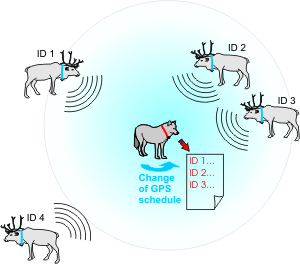
Check out our Flyers:
